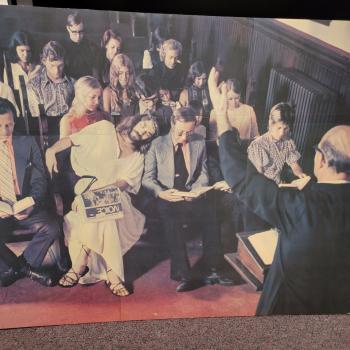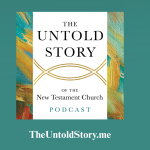 What follows here is a review I did for JAOS (the Journal of the American Oriental Society) which was recently published. Enjoy.
What follows here is a review I did for JAOS (the Journal of the American Oriental Society) which was recently published. Enjoy.
The Sage from Galilee: Rediscovering Jesus’ Genius. By David Flusser and R. Steven Notley. Grand Rapids: Wm. B. Eerdmans Publishing Company, 2007. Pp. xix + 191, illus. $20 (paper).
When in 1968 David Flusser first published a book in German on the historical Jesus, it is fair to say that he could not have imagined where this effort would lead. One of the first Jewish scholars in the modern era to attempt such a book, he surely did not expect that he would eventually receive such a warm response from a variety of audiences, including even conservative Christians.
However, when the book appeared in English in 1969, in a translation marred by various infelicities and errors, it was largely overlooked or ignored. What we have in The Sage from Galilee: Rediscover- ing Jesus’ Genius is not merely a better rendering of the original work, but rather a thorough revision and improvement, reflecting the development and culmination of Flusser’s thinking on the subject up until his death in 2000. This is why Eerdmans rightly decided to publish the book under a new title. Readers familiar with the original German edition of the work will recognize that R. Steven Notley has done a great service in incorporating seamlessly some of Flusser’s supplemental material into the existing twelve chapters.
If we ask what David Flusser brought to the study of the historical Jesus that others could not and did not, the answer is manifold. First, the breadth and depth of his knowledge of early Judaism and its sources were vast. He was that rare scholar who had a profound grasp of the requisite languages,
Reviews of Books 153
culture, physical setting, and archaeology, as well as the literary sources. Second, he had a keen inter- est in Jesus and in understanding him as a crucial historical figure. Third and most importantly—as Notley so aptly puts it: “Flusser felt no need to deny Jesus his high self-awareness. In his understand- ing, the historical Jesus was both identified with his people and the cornerstone of the faith of the early Christian community” (p. xi). Flusser also had the rare gift of allowing a person his distinctiveness, not attempting to explain it away, while still being able to show how what had come before him had in various ways prepared for and influenced a figure like Jesus. For example, Flusser highlights and stresses the love ethic of Jesus, in particular its command to love one’s enemies, without suggesting that Jesus had any desire to start a new world religion. For Flusser it was axiomatic that Jesus not only was a Jew but wanted to remain within the Jewish faith. At the same time he insisted: “I personally identify myself with Jesus’s Jewish worldview, both moral and political, and I believe that the content of his teachings and the approach he embraced have always had the potential to change our world and prevent the greatest part of evil and suffering” (p. xviii).
What his students like Notley also tell us is that to his very last days Flusser felt he was still learning and still needed to modify his views in the light of new evidence. He modeled the virtue of a commit- ment to life-long learning coupled with the obligation to revise his views over time as the evidence required it. Furthermore, he passionately believed that Jesus had something to say to our current world situation and human dilemmas. Indeed, he held that Jesus’ life and teaching should influence how we conduct our lives today. This is one of the reasons so many Christian students wanted to go to Hebrew University and study with him. He was most assuredly Israel’s foremost scholar on Jesus and early Christianity, and his whole-hearted commitment to a historical and philological approach to the subject matter is refreshing.
In his chapter on methodology and sources, Flusser stakes out his territory clearly. In his view, “the most genuine sources concerning a charismatic personality are his utterances and the accounts of the faithful—read critically of course. . . . An impartial reading of the Synoptic Gospels results in a picture not so much of a redeemer of mankind, but of a Jewish miracle worker and preacher” (p. 2). He is convinced that the synoptic gospels do a better job of presenting us with the historical Jesus, whereas John gives us a post-Easter Christological portrait. In other words, Flusser does not see the synoptic accounts as samples of early Christian kerygma, the preaching about Jesus.
Flusser’s analysis of the synoptic gospels, however, did not lead him to embrace the theory of Markan priority; rather, he wanted to suggest that “the Synoptic Gospels are based upon one or more non-extant early documents composed by Jesus’ disciples and the early church in Jerusalem. These texts were originally written in Hebrew. Subsequently they were translated into Greek and passed through various stages of redaction. It is the Greek translations of these early Hebrew sources that were employed by our three Evangelists. . . . Luke preserves, in comparison with Mark (and Matthew when depending on Mark), the more primitive tradition” (pp. 3–4).
Few scholars would follow Flusser in this conclusion of Lukan priority, though certainly Q scholars tend to prefer the Lukan version of Q over the Matthean one, and recently there has been a detailed study by Maurice Casey demonstrating the Aramaic Vorlage of a good deal of the Gospel of Mark (Aramaic Sources of Mark’s Gospel). But this is not all. Flusser also believed that Matthew, when independent of Mark, frequently preserves the earlier sources of the life of Jesus that lie behind Luke’s account. Mark is said to have reworked the material and unfavorably influenced Matthew. So strongly does Flusser hold this view that he concludes that Mark presents us with a Jesus who is a supernatural, lonely holy man and wonderworker who is unique and universally misunderstood even by his disciples.
Flusser did his own translations from what he believed was the Hebrew Vorlage behind the Greek of Jesus’ sayings in the synoptic gospels. But that assumes that Jesus spoke Hebrew and not Aramaic, which in my view is surely wrong. It is not a surprise that many have simply viewed Flusser as eclectic and even eccentric when it comes to methodology.
Flusser accepts the authenticity of the claim of Josephus that Jesus was a sage and was seen as such in his own day, and he rejects the views of J. D. Crossan and others that Jesus was a simple peasant. In this respect, one is of course reminded of the work of Geza Vermes, who follows a similar approach in this matter. Flusser takes this line because he finds in the sayings of Jesus evidence of learning, if not
154 Journal of the American Oriental Society 131.1 (2011)
of being learned, and he thinks that Jesus really was called “rabbi,” a term which in his view referred to scholars and teachers. He says that, against the opinion of some, the historical evidence suggests that carpenters were considered particularly learned. He thus opposes the bucolic notion that Jesus was a naïve simple manual worker.
One of the major axioms on which Flusser stakes all is that Jesus was a law-observant Jew, and that any evidence to the contrary must be due to the redactional work of the evangelists or others. Acknowl- edging that “it would be wrong to describe Jesus as a Pharisee in the broad sense . . . ,” Flusser none- theless recognizes a serious “tension which never implied negation, nor were the views of Jesus and the Pharisees contrary or ever degenerated into enmity” (p. 47). Were this correct, it would be exceedingly difficult to explain how Saul as a Pharisee saw it as his mission to persecute the earliest Jewish follow- ers of Jesus. It would be nearer the mark to say that there were serious differences between the holiness movement led by Jesus, and that of the Pharisees, and that they often clashed on issues of practice, but not over the doctrine of resurrection.
To the end of his study Flusser continues to insist on the importance and high self-awareness or messianic self-understanding of Jesus, and near the close he stresses that “it would be absurd to suppose that Christianity adopted an unambitious, unknown Jewish martyr and catapulted him against his will into the role of chief actor in a cosmic drama” (p. 164). Rather Flusser thinks that Jesus’ self- understanding, however germinal in form, provided the seed for the great flowering of Christology thereafter. In this fashion he makes clear that at the end of the day one cannot radically separate the historical Jesus from the Christ of early Christian faith.
Ben Witherington, III Asbury Theological Seminary
















